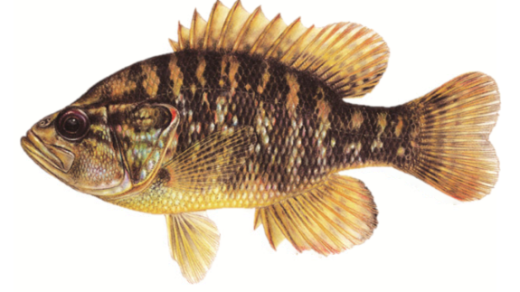The choice of line can often make or break an angler’s success. Among the myriad options available, selecting the ideal line for a spinning reel stands as a pivotal decision, influencing casting distance, durability, and overall performance on the water. As enthusiasts cast their lines into the vast expanse of fishing gear, discerning the best line for spinning reels requires a nuanced understanding of various factors, from line material to pound test strength. Delving into this realm unveils a tapestry of options, each with its unique characteristics and advantages, tailored to suit the diverse needs and preferences of anglers worldwide.
Types of Fishing Lines
When delving into the realm of fishing lines for spinning reels, anglers are confronted with a diverse array of options, each boasting distinct properties and applications. Understanding the different types of fishing lines is crucial in making an informed choice that aligns with one’s fishing style and target species.
- Monofilament Line: Monofilament lines, often referred to as mono lines, are a popular choice among anglers for their versatility and affordability. Composed of a single strand of nylon, monofilament lines offer stretchability, making them forgiving when dealing with sudden strikes or aggressive fish. This elasticity can serve as a buffer against sudden jerks, preventing hooks from tearing out or lines from snapping. Additionally, mono lines tend to float on water, making them ideal for topwater lures or techniques that require buoyancy. However, their inherent stretch can also result in reduced sensitivity, making it challenging to detect subtle bites, especially when fishing in deeper waters or with finesse presentations.
- Fluorocarbon Line: Fluorocarbon lines have gained widespread popularity among anglers seeking enhanced sensitivity and low visibility underwater. Made from a dense and refractive material, fluorocarbon lines are virtually invisible in water, making them an excellent choice for wary or line-shy fish species. Unlike monofilament, fluorocarbon lines have minimal stretch, transmitting even the slightest taps or nudges along the line directly to the angler’s rod tip. This increased sensitivity is particularly advantageous when finesse fishing or targeting fish in deeper waters where precision is paramount. Furthermore, fluorocarbon lines boast superior abrasion resistance, making them suitable for fishing in snag-infested areas or around sharp structure without compromising strength or durability. However, fluorocarbon lines tend to sink in water, which can be both an advantage and a limitation depending on the fishing scenario. While the sinking nature of fluorocarbon lines aids in achieving deeper lure presentations and maintaining direct contact with the bait, it may not be the ideal choice for topwater fishing or situations where a buoyant line is desired.
- Braided Line: Braided lines, often constructed from woven strands of synthetic fibers like Spectra or Dyneema, are renowned for their exceptional strength, sensitivity, and minimal stretch. Unlike monofilament or fluorocarbon lines, braided lines exhibit little to no stretch, allowing anglers to feel even the faintest twitches or bites with unparalleled clarity. This heightened sensitivity enables precise hook sets and enhances overall angler control, particularly when fishing in challenging conditions or targeting elusive species. Moreover, braided lines offer remarkable strength-to-diameter ratios, allowing for increased line capacity on reels without sacrificing strength or sacrificing visibility. Additionally, the thin diameter of braided lines facilitates long casting distances, making them ideal for covering vast stretches of water or presenting lures to distant targets. However, braided lines lack the inherent buoyancy of monofilament, which can result in reduced visibility and difficulty in detecting strikes, especially when fishing with topwater lures or finesse techniques. Additionally, braided lines are highly visible underwater, which may deter line-shy fish or necessitate the use of fluorocarbon or monofilament leaders for stealthy presentations.
Factors to Consider When Choosing a Fishing Line
Selecting the right fishing line for your spinning reel involves considering a range of factors to ensure optimal performance and success on the water. Here are some key considerations to weigh when making your decision:
- Fishing Conditions: Assessing the prevailing fishing conditions is crucial in determining the most suitable line for your outing. Factors such as water clarity, depth, structure, and the presence of vegetation can influence your choice. For instance, in clear water with minimal obstructions, fluorocarbon lines may offer an advantage due to their low visibility and abrasion resistance. Conversely, in dense cover or snag-infested areas, braided lines’ superior strength and durability may be preferred.
- Target Species: Different fish species exhibit varying behaviors and preferences, necessitating tailored approaches to line selection. Consider the size, aggression, and feeding habits of your target species when choosing a fishing line. For example, when targeting larger predatory species known for their powerful runs and sharp teeth, such as muskellunge or pike, a sturdy braided line with high abrasion resistance may be essential to withstand their aggressive strikes and abrasive mouths.
- Fishing Technique: The fishing technique employed plays a significant role in determining the most suitable line type and characteristics. Whether you’re finesse fishing with light tackle or power fishing with heavy lures, matching your line to your technique is crucial for optimal performance. For finesse techniques like drop shotting or wacky rigging, where sensitivity and finesse are paramount, fluorocarbon lines’ low stretch and high sensitivity may be preferred. Conversely, for techniques requiring long casts and strong hook sets, such as flipping and pitching, braided lines’ superior strength and minimal stretch offer distinct advantages.
- Reel Capacity and Line Weight: Understanding your spinning reel’s capacity and the recommended line weight range is essential for selecting compatible fishing lines. Consult your reel’s specifications to determine the appropriate line weight and capacity it can accommodate. Avoid overloading or underloading your reel, as it can affect casting performance, line management, and overall reel functionality. Refer to the manufacturer’s guidelines or consult with knowledgeable tackle specialists to ensure proper line selection for your reel.
- Budget and Preference: Finally, consider your budget constraints and personal preferences when choosing a fishing line. While high-quality lines often come with a higher price tag, they may offer superior performance and durability in the long run. However, budget-friendly options are available that still provide adequate performance for recreational anglers. Additionally, consider factors such as color preference, visibility, and handling characteristics that align with your fishing style and preferences.
To aid in comparing the various types of fishing lines based on these factors, refer to the table below:
| Factor | Monofilament Line | Fluorocarbon Line | Braided Line |
| Water Visibility | Medium | Low | High |
| Stretch | High | Low | Low |
| Sensitivity | Moderate | High | High |
| Abrasion Resistance | Moderate | High | High |
| Buoyancy | Floating | Sinking | Sinking |
| Castability | Good | Moderate | Excellent |
| Price | Affordable | Moderate | Expensive |
Maintenance Tips for Fishing Lines
Proper maintenance of fishing lines is essential to prolong their lifespan, maintain performance, and minimize the risk of line failure. Here are some valuable tips for maintaining fishing lines:
- Regular Inspection: Before each fishing trip, inspect your fishing line for any signs of damage, abrasion, or wear. Run your fingers along the entire length of the line, feeling for rough spots, nicks, or frays. Pay close attention to areas near knots, guides, and reel spools, as these are common areas where abrasion can occur. If you detect any damage or weak spots, consider replacing the line to prevent potential breakages during critical moments.
- Cleaning: After fishing in saltwater or freshwater environments, it’s crucial to clean your fishing lines thoroughly to remove dirt, debris, and salt residue. Use a mild soap or specialized line cleaner and a soft cloth to gently wipe down the entire length of the line. Rinse the line with freshwater to remove any remaining residue, ensuring it is completely clean before drying.
- Avoid Overexposure to Sunlight: Prolonged exposure to ultraviolet (UV) rays from the sun can degrade fishing lines over time, leading to weakening and increased susceptibility to breakage. Store your fishing reels in a cool, shaded area when not in use, and avoid leaving them exposed to direct sunlight for extended periods. If fishing in sunny conditions, consider using a reel cover or protective case to shield your gear from UV damage.
- Proper Storage: Storing fishing lines correctly can help prevent tangling, twisting, and unnecessary stress that can weaken the line. When not in use, store your fishing reels in a dry, climate-controlled environment away from extreme temperatures and humidity. Avoid coiling or winding the line tightly around objects, as this can cause memory retention and lead to casting issues. Instead, use line spools or storage accessories designed to maintain the integrity of the line.
- Replace Worn Components: Over time, components such as fishing line guides and reel spools may wear out or become damaged, affecting the performance of your fishing gear. Inspect these components regularly and replace any worn or damaged parts to ensure smooth line movement and optimal casting performance. Additionally, periodically check and replace fishing line knots if they show signs of weakening or slippage.
- Use Line Conditioners: Applying line conditioners or lubricants specifically designed for fishing lines can help reduce friction, improve casting distance, and enhance overall performance. These products help to keep the line supple and smooth, reducing the risk of tangles and backlash. Apply line conditioner sparingly according to the manufacturer’s instructions, and avoid using products that may contain harsh chemicals that could damage the line.
Common Fishing Line Knots
Mastering essential fishing line knots is crucial for securing terminal tackle, connecting line components, and ensuring reliable performance on the water. Here are some common fishing line knots every angler should know:
- Improved Clinch Knot:
- Application: Used for tying hooks, lures, or swivels to the end of the fishing line.
- Strength: Offers strong and reliable knot strength, suitable for most fishing situations.
- How to Tie:
- Pass the tag end of the line through the eye of the hook or lure, creating a loop.
- Wrap the tag end around the standing line 5-7 times.
- Insert the tag end through the loop created near the hook eye.
- Moisten the knot and pull the tag end to tighten the knot securely against the eye.
- Palomar Knot:
- Application: Ideal for securing larger hooks, artificial lures, or swivels.
- Strength: Offers excellent knot strength and reliability, even with heavier lines.
- How to Tie:
- Double the fishing line and pass it through the eye of the hook or lure.
- Tie an overhand knot, forming a loop with the doubled line.
- Pass the loop over the hook or lure.
- Moisten the knot and pull both ends of the line to tighten securely.
- Uni Knot (or Duncan Loop):
- Application: Versatile knot used for attaching terminal tackle, joining lines, or creating loops.
- Strength: Provides reliable knot strength and versatility for various fishing scenarios.
- How to Tie:
- Pass the line through the eye of the hook or lure and double back, creating a loop.
- Wrap the tag end around both lines and through the loop 4-6 times.
- Moisten the knot and pull the tag end to tighten, sliding the knot against the eye of the hook.
- Blood Knot (or Barrel Knot):
- Application: Primarily used for joining two lines of similar diameter, such as leader to mainline connections.
- Strength: Offers a strong and secure connection between lines, minimizing line failure.
- How to Tie:
- Overlap the ends of the two lines to be joined.
- Wrap one line around the other 4-6 times, working towards the tag end.
- Pass the tag end through the loop created between the lines.
- Repeat the process with the other line, wrapping it in the opposite direction.
- Moisten the knot and pull both main lines to tighten, ensuring the wraps snugly interlock.
Choosing the Right Line Diameter and Pound Test
Selecting the appropriate line diameter and pound test is crucial for matching your fishing line to the target species, fishing conditions, and angling technique. Here’s a comprehensive guide to choosing the right line diameter and pound test for your fishing endeavors:
- Line Diameter: The diameter of the fishing line directly impacts its performance in terms of casting distance, sensitivity, and visibility. Thicker lines offer increased strength and abrasion resistance but may sacrifice casting distance and sensitivity. Conversely, thinner lines provide enhanced casting performance, sensitivity, and lure action but may compromise on strength and durability. When selecting line diameter, consider the following factors:
- Target Species: Larger and more powerful fish species require thicker lines with higher pound test ratings to withstand their aggressive runs and abrasive mouths. Smaller or more delicate species may be targeted with lighter lines to minimize visibility and maintain finesse.
- Fishing Conditions: In clear water or heavily pressured environments, opting for thinner diameter lines can enhance stealth and minimize visibility, increasing the chances of enticing wary fish. In contrast, fishing in snag-infested areas or rocky bottoms may necessitate thicker lines to withstand abrasion and prevent break-offs.
- Casting Distance: Thinner diameter lines offer reduced air resistance, allowing for longer casting distances and improved lure presentation. Anglers targeting distant or elusive fish may benefit from using thinner lines to reach their targets more effectively.
- Pound Test Rating: Pound test refers to the amount of weight a fishing line can withstand before breaking. Choosing the appropriate pound test rating depends on factors such as the size and strength of the target species, fishing technique, and the presence of obstructions or structure. Consider the following guidelines when selecting pound test:
- Target Species: Match the pound test rating of your fishing line to the size and fighting strength of the target species. Larger and more powerful fish require higher pound test lines to handle their aggressive runs and prevent break-offs.
- Fishing Technique: Different fishing techniques may require varying pound test ratings to optimize performance. For example, finesse techniques like drop shotting or wacky rigging may call for lighter lines to maintain sensitivity and lure action, while power fishing techniques like flipping or pitching may require heavier lines to control strong fish and navigate dense cover.
- Obstructions and Structure: Fishing around obstructions such as rocks, logs, or submerged vegetation increases the risk of line abrasion and breakage. Using heavier pound test lines can help withstand the rigors of fishing in snag-infested areas and prevent costly break-offs.
- Line Capacity: Consider the maximum pound test rating recommended for your spinning reel to ensure compatibility and avoid overloading the reel. Refer to the manufacturer’s specifications for guidance on the appropriate line capacity for your reel model.
- Angler Skill Level: Beginners may benefit from starting with heavier pound test lines to minimize the risk of break-offs and gain confidence in handling fish. As angler skill and experience level increase, experimenting with lighter lines for finesse presentations or challenging fishing scenarios can enhance versatility and proficiency.
By carefully considering the line diameter and pound test rating based on these factors, anglers can tailor their fishing lines to meet the demands of various fishing scenarios, maximize performance, and increase their chances of success on the water.
Table: Guide to Choosing the Right Line Diameter and Pound Test
| Target Species | Fishing Conditions | Casting Distance | Pound Test Rating |
| Large, powerful fish (e.g., bass, pike) | Clear water, heavy cover | Longer casting distance desired | Higher pound test for strength |
| Small, delicate species (e.g., trout, panfish) | Pressured environments, shallow water | Increased stealth desired | Lighter pound test for finesse |
| Fishing around obstructions (e.g., rocks, logs) | Snag-infested areas, rocky bottoms | Longer casting distance required | Heavier pound test for durability |
| Power fishing techniques (e.g., flipping, pitching) | Open water, minimal obstructions | Increased sensitivity desired | Moderate pound test for versatility |
| Finesse techniques (e.g., drop shotting, wacky rigging) | Dense cover, submerged vegetation | Lighter line for finesse presentations | Lighter pound test for sensitivity |
Conclusion:
In the dynamic world of fishing, the choice of fishing line for spinning reels plays a pivotal role in determining an angler’s success on the water. Throughout this guide, we’ve explored the intricate nuances of selecting the best line, considering factors such as line type, maintenance tips, essential knots, and choosing the right line diameter and pound test.
Understanding the characteristics and applications of monofilament, fluorocarbon, and braided lines empowers anglers to make informed decisions based on their specific fishing preferences, target species, and fishing conditions. Moreover, mastering essential fishing line knots is essential for securing terminal tackle, joining lines, and ensuring reliable performance when battling trophy fish.
Furthermore, selecting the appropriate line diameter and pound test is critical for optimizing casting distance, sensitivity, and durability while matching the demands of various fishing scenarios. By carefully considering factors such as target species, fishing technique, and environmental conditions, anglers can tailor their fishing lines to meet the challenges of any angling adventure.
In essence, choosing the right fishing line for spinning reels is a blend of science, strategy, and angling intuition. By employing the knowledge and techniques shared in this guide, anglers can enhance their fishing proficiency, increase their chances of landing prized catches, and embark on rewarding angling experiences for years to come. So, whether you’re casting for bass in freshwater lakes, targeting trout in mountain streams, or pursuing saltwater giants in the open ocean, may your fishing lines be strong, your knots secure, and your angling adventures unforgettable.




